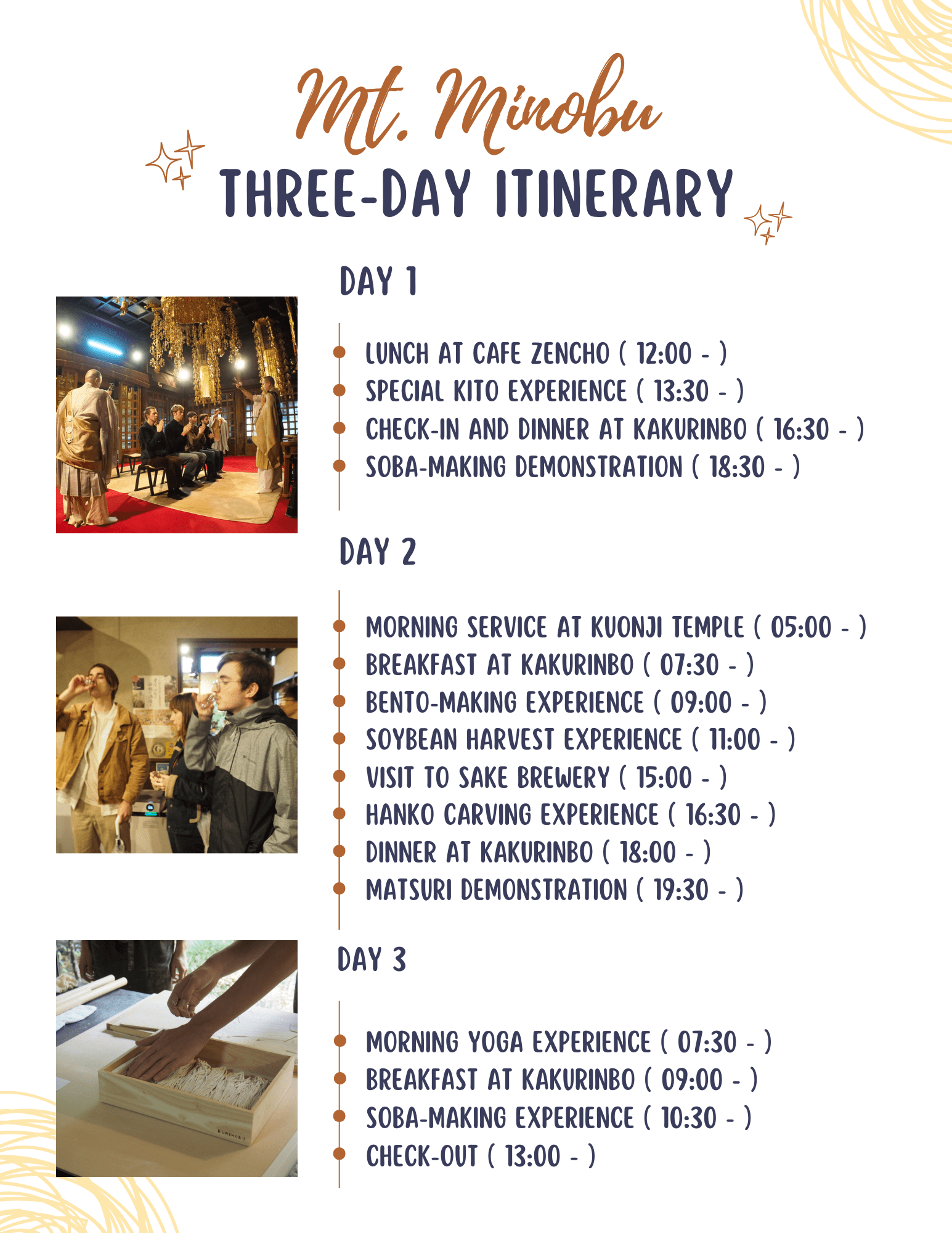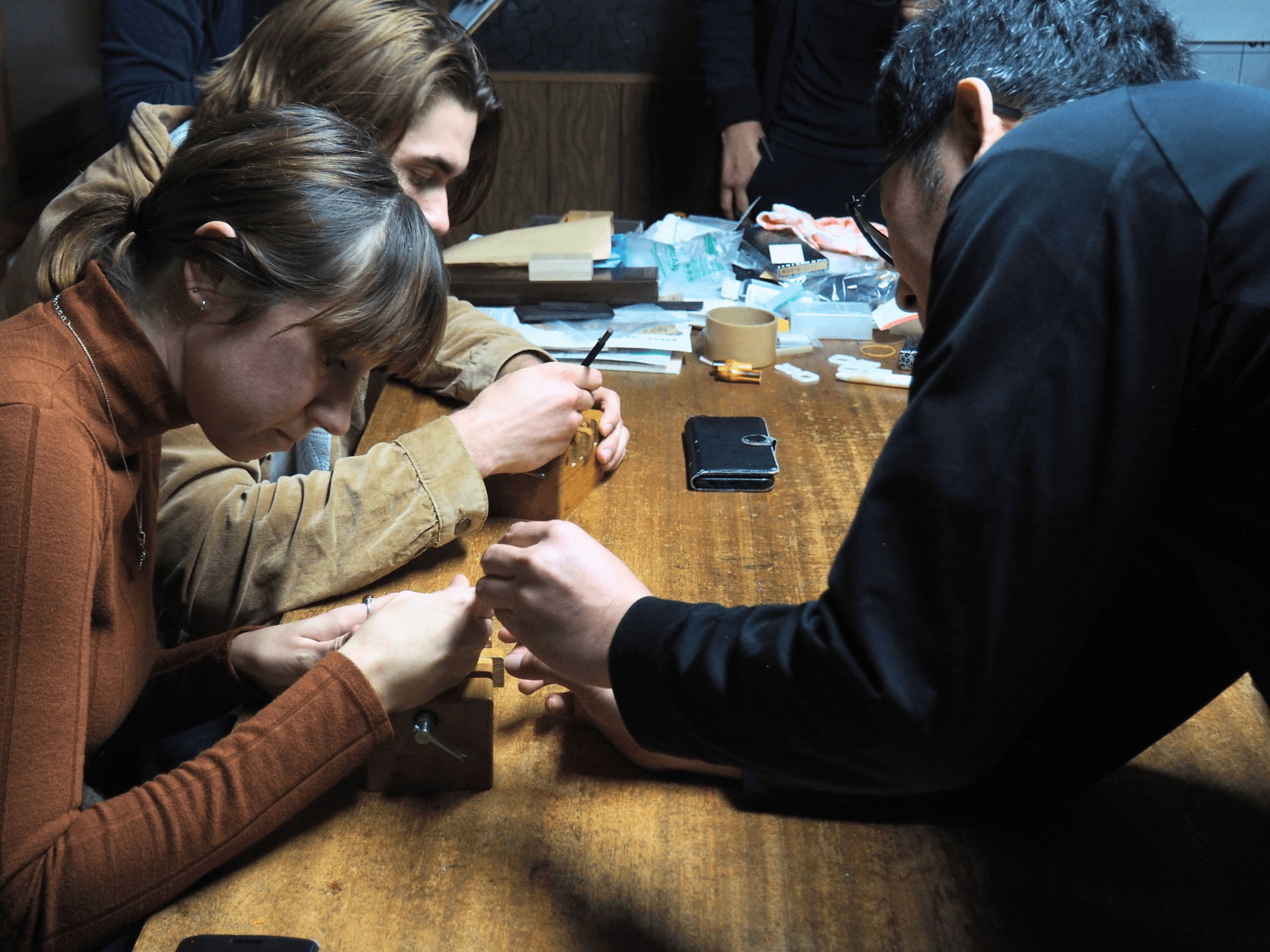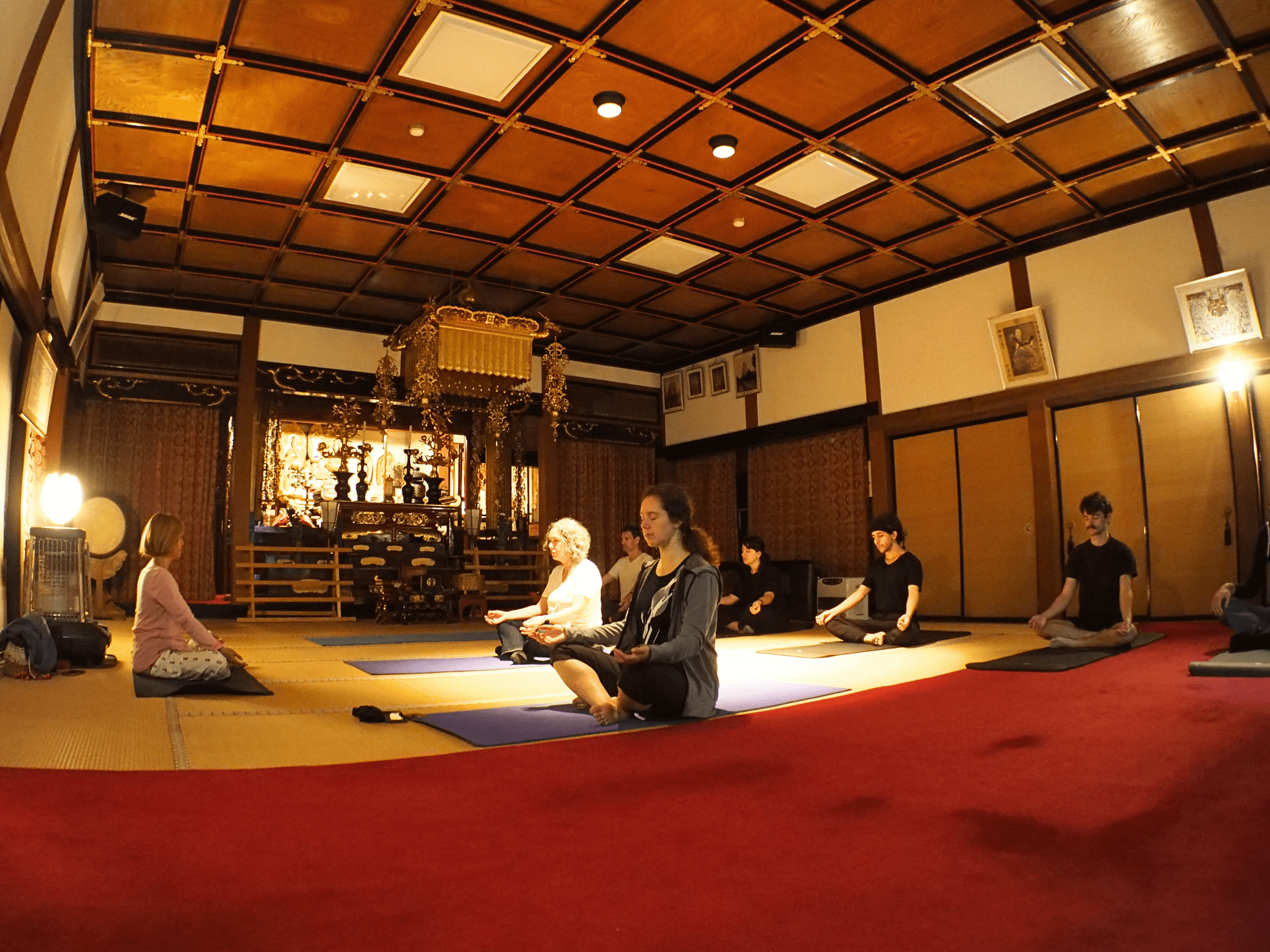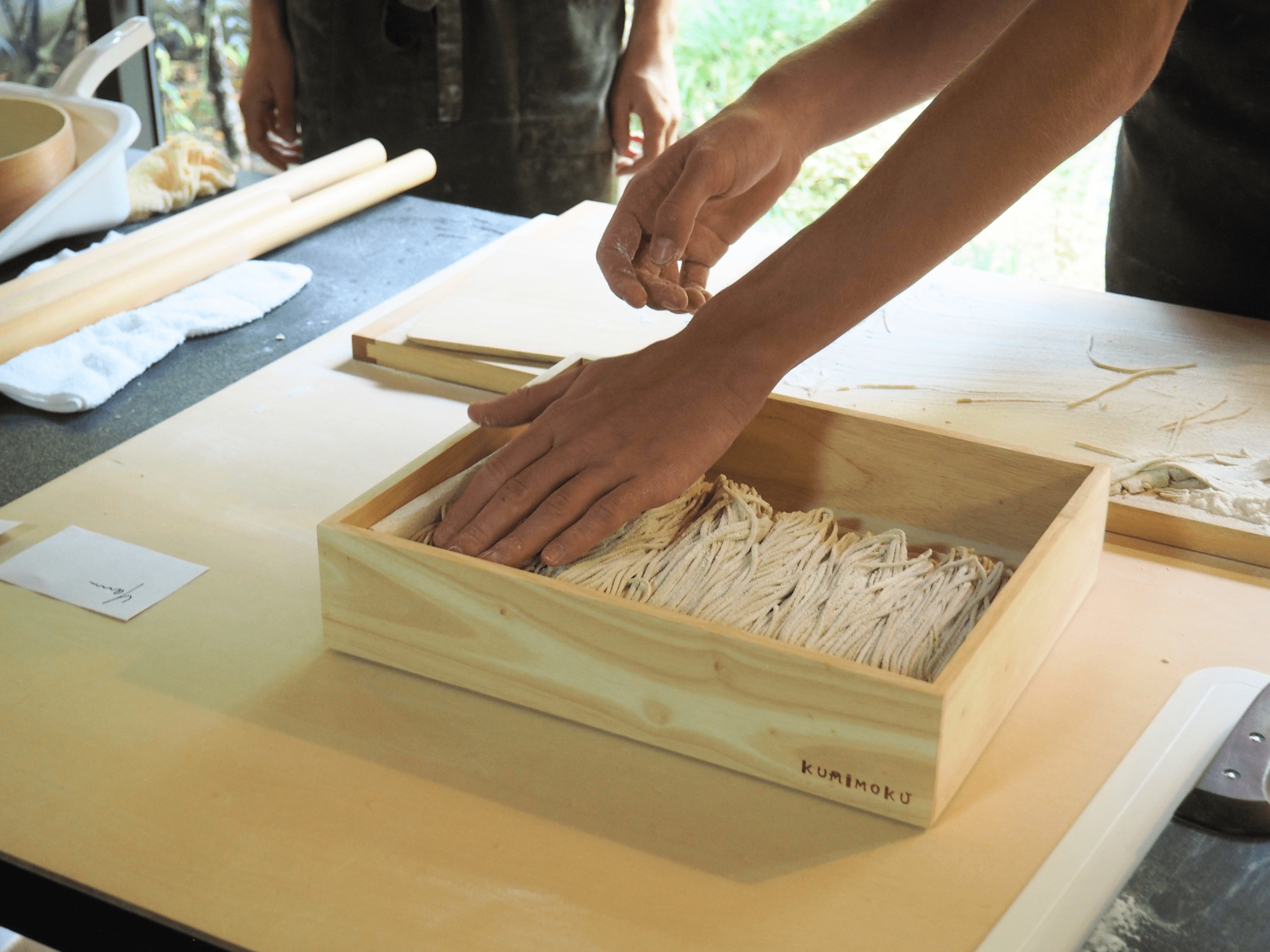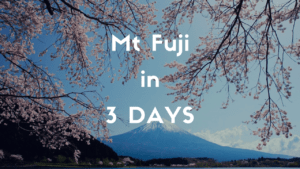Exploring Mt. Minobu: Three day Itinerary including Temple Stay at Kakurinbo
Uncover Japan’s Spiritual Heart with an Itinerary of History, Ritual, and Peaceful Lodging

For travelers looking to experience Japan beyond the usual tourist spots, Mt. Minobu offers a blend of nature, spirituality, and cultural activities. With its historical ties to Nichiren Buddhism and Kuonji Temple, Mt. Minobu serves as a peaceful pilgrimage site where visitors can immerse themselves in traditional Japanese culture.
Staying at the temple lodging Kakurinbo allows guests to truly embrace the area’s spiritual ambiance, with various activities that connect them to the mountain’s history and culture.
This three-day itinerary, featuring Kakurinbo, showcases a journey into the serene heart of Japan.
What is Mt. Minobu
Mt. Minobu (身延山), or Minobusan, is both a revered spiritual site and a place of breathtaking natural beauty. Located in Yamanashi Prefecture, about three hours from Tokyo, Mt. Minobu is accessible via highway bus or train, making it a convenient retreat between Tokyo and the Kansai region.
Renowned as the headquarters of Nichiren Shu Buddhism, the mountain holds deep significance for followers of the faith. It was here in 1274 that Nichiren Shonin, the founder of Nichiren Buddhism, established Kuonji Temple (身延山久遠寺), which has since become a site of pilgrimage.
Visitors flock to Mt. Minobu to climb the 287 steps leading to the main hall of Kuonji, engage in spiritual reflection, and admire the surrounding natural beauty.
Beyond Kuonji, the village of Minobusan offers quaint streets, traditional inns, and cafes that embody the region’s gentle charm. Staying at Kakurinbo, a historic temple lodging, enriches the experience by allowing guests to participate in activities that promote a deeper understanding of the local culture and Buddhist teachings.
Temple stay at Kakurinbo
Temple stays in Japan, or shukubo, allow visitors to experience the life and traditions of Buddhist temples. Kakurinbo (覚林坊), a temple lodging with over 550 years of history, is a part of the Gyogakuin complex linked to Kuonji Temple.
Originally designed for monks, Kakurinbo now welcomes both pilgrims and international travelers seeking an authentic cultural experience. Recognized with the “Best Inbound Travel” award at the Japan Travel Awards 2024, Kakurinbo’s unique blend of traditional lodging with modern amenities has made it popular among international visitors.
Efforts by Kakurinbo and the local community aim to raise awareness of Mt. Minobu as a visiting destination, spotlighting its cultural and spiritual significance. With activities that offer deep insight into Japanese traditions, Kakurinbo exemplifies shukubo culture, creating a memorable and enlightening stay for visitors from around the world.
Check out more about Kakurinbo in the following article.
▶ Kakurinbo: The Temple Stay Experience Gaining Popularity in Yamanashi
My Three-day Experience at Mt. Minobu
I recently embarked on a three-day journey through Mt. Minobu, staying at Kakurinbo and enjoying a range of experiences, from temple rituals to hands-on workshops.
My three-day itinerary is shown below.
This itinerary represents just one way to explore Mt. Minobu, but I hope it inspires others to design their own unique experience.
Day 1
Arriving at the location
I began my journey early in the morning, catching the 7:45 a.m. highway bus from Shinjuku Bus Terminal (Busta Shinjuku) in Tokyo. The direct bus service to Mt. Minobu is incredibly convenient, sparing passengers the need for multiple transfers and allowing them to relax on the journey.
The three-and-a-half-hour trip gave me a chance to enjoy views of the changing landscape as we left Tokyo’s urban skyline behind and entered the lush, mountainous terrain of Yamanashi.
At 11:25 a.m., I arrived at the Minobusan bus stop, where a 15-minute walk led me to Café Zencho, the starting point of my three-day experience.
Lunch at Cafe Zencho

Café Zencho, located next to Guest Villa Ebisuya, is a cozy spot known for its fresh, locally sourced menu. The café reflects the spirit of Mt. Minobu with its focus on simplicity and quality, offering a variety of dishes that showcase the flavors of the region.

I chose the Hoto pasta, a modern twist on Yamanashi’s traditional noodle dish. The set meal included a small salad and a smoothie dessert, which was both refreshing and satisfying.

The café’s welcoming atmosphere, with its spacious outdoor terrace and quaint indoor counter, provided a wonderful start to my visit, setting a tone of relaxation and cultural immersion.
Special Kito experience at Okunoin Shishinkaku

After having lunch and meeting with the other participants at Café Zencho, we went for a unique experience: a special kito (祈祷) session at Okunoin Shishinkaku (奥の院思親閣). Kito is a special prayer or blessing ritual performed by Buddhist priests to bring peace, protection, or fulfillment of wishes for participants.

Guided by Zeko-san, the Deputy Chief Priest of Kakurinbo, we made our way to Kuonji Temple and then boarded the ropeway, which took us up the mountainside to Okunoin Shishinkaku.
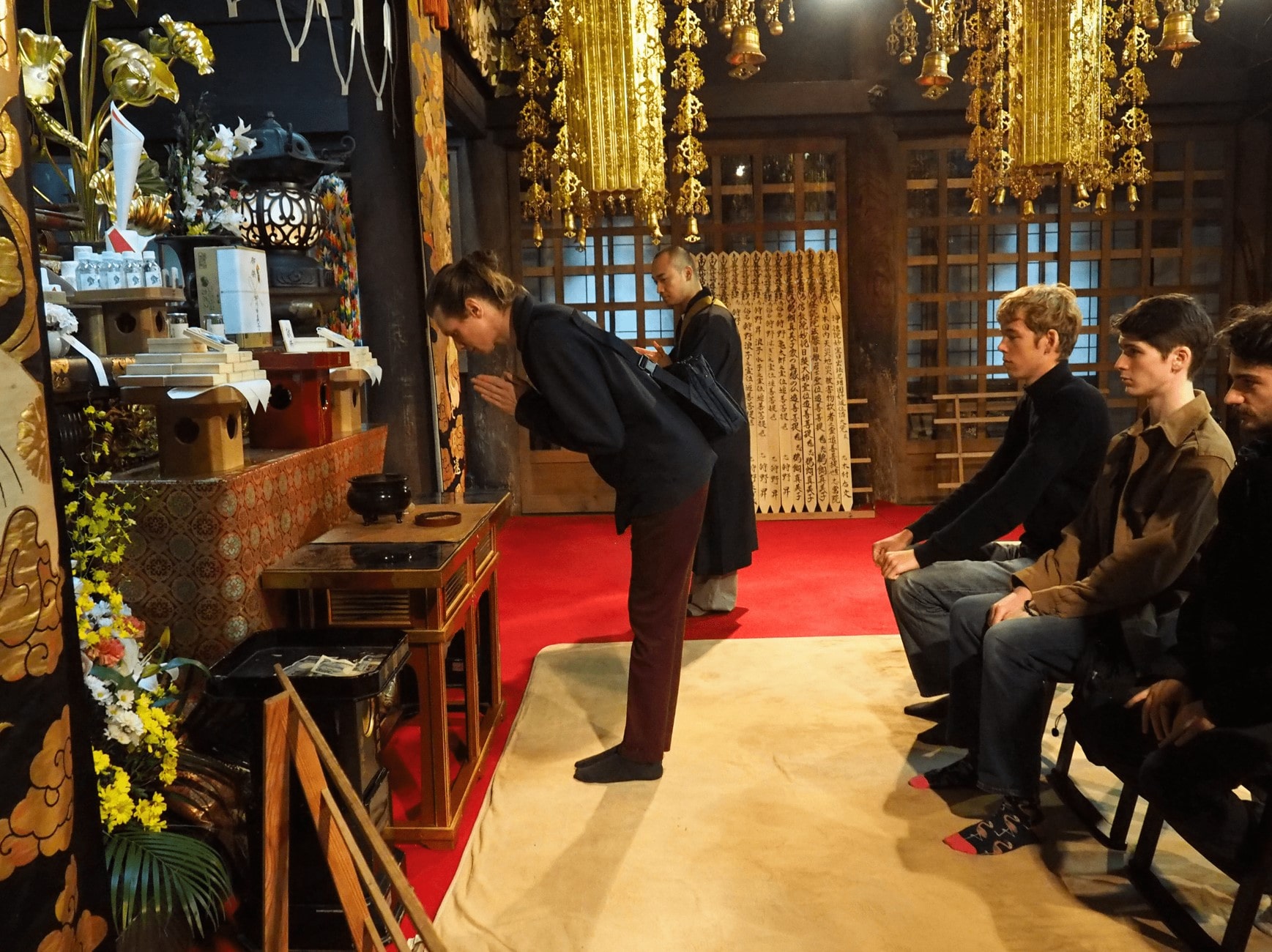
This site holds deep meaning, as Nichiren Shonin himself climbed this path to pray for his parents. Upon arrival, we participated in the traditional prayer ritual, experiencing the quiet strength and reverence that permeates this sacred space.

The Kito prayer ritual involves a priest chanting sacred sutras—particularly the Lotus Sutra—while focusing on the participant’s request or intention. The chanting is often accompanied by rhythmic drumming, creating a powerful atmosphere believed to connect the participant to the protective energy of the Buddha, helping to bring peace, healing, or guidance.
After the experience, the head priest of the Okunoin Shishinkaku spent a few minutes explaining the Kito prayer as well as Nichiren Buddhism in general. He answered questions from the participants as well.
The Temple is located on the top of the mountain. The peaceful surroundings added a layer of serenity, making this experience one of the most memorable moments of the visit.
Check-in and Dinner at Kakurinbo

After the Kito prayer experience, we proceeded to check in at Kakurinbo.
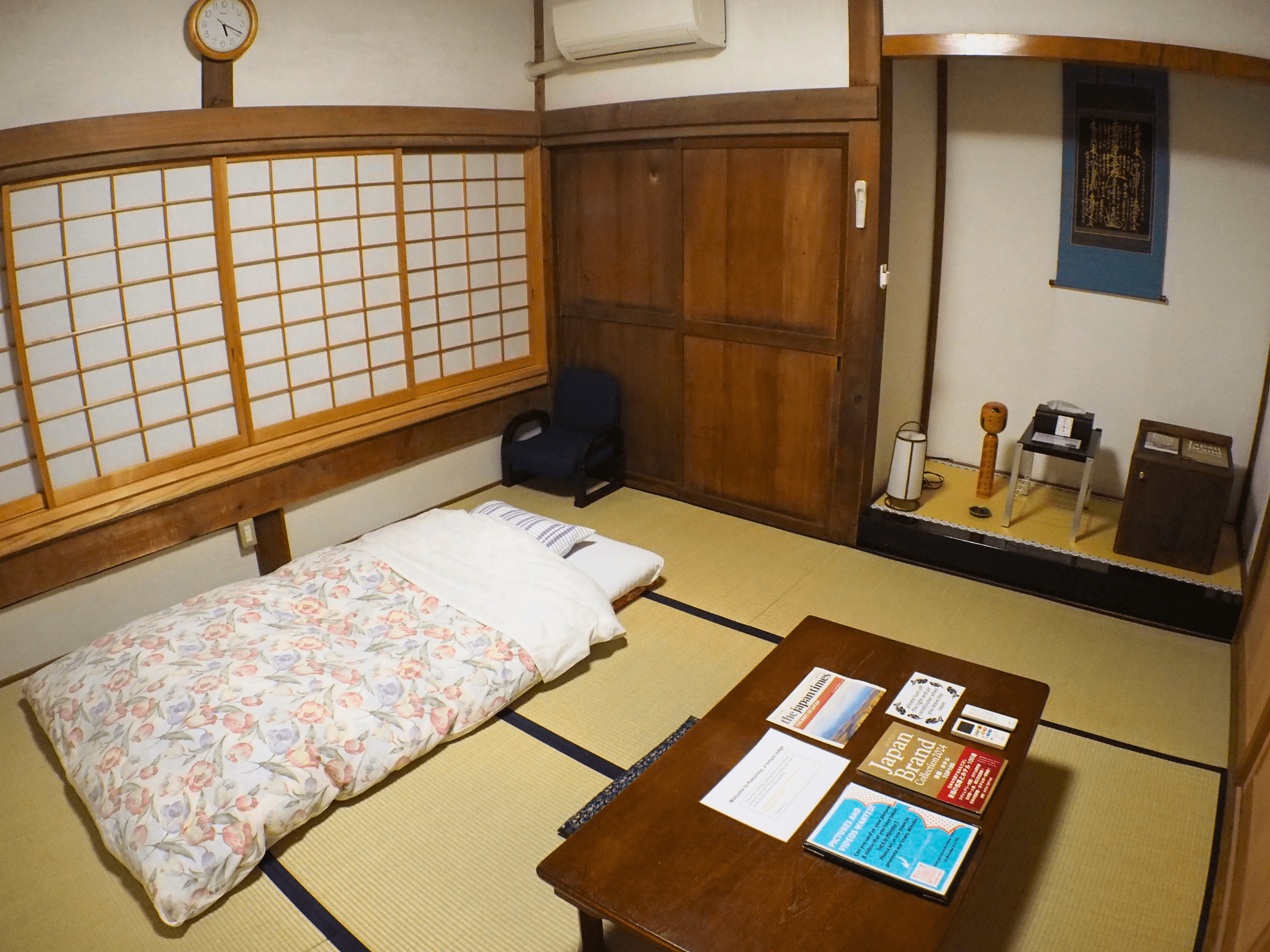
My room exuded a calming, traditional aesthetic. The washitsu (Japanese-style) room was adorned with sliding fusuma doors and tatami mats, creating an ambiance of timeless elegance.

Dinner was served in a kaiseki style, a multi-course meal featuring local ingredients such as yuba (tofu skin) and shiitake mushrooms.
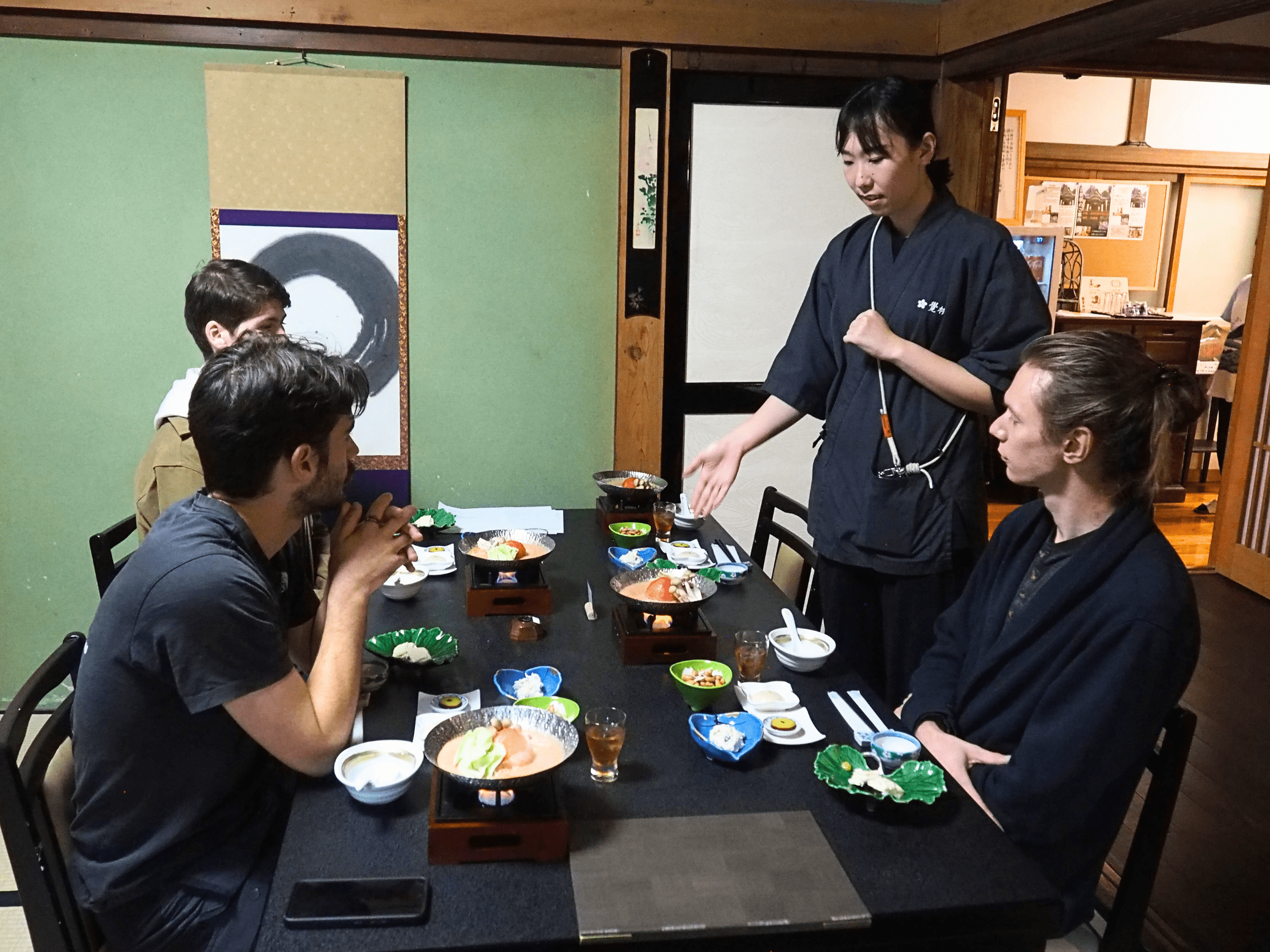
This culinary experience, rooted in Buddhist traditions, highlighted the natural flavors of Yamanashi and offered a balanced, nourishing meal.
Kakurinbo’s attention to dietary preferences, including vegan and vegetarian options, makes the experience accessible to all guests.
Learn more about Kakurinbo in the following article.
▶ Kakurinbo: The Temple Stay Experience Gaining Popularity in Yamanashi
Soba-Making Demonstration
As I enjoyed my meal, I also had the pleasure of watching a soba-making demonstration by Tanimura-san, a skilled chef and owner of Sobayado Fukuichi (そば宿 福いち), who shared insights into this traditional craft.

He demonstrated the techniques of mixing, kneading, and cutting the dough, explaining the significance of each step in creating the perfect soba.
Guests were encouraged to ask questions and take photos, adding an interactive element to the dining experience. This demonstration deepened the appreciation for soba as more than just a dish—it’s a tradition that embodies patience and precision.
Day 2
Morning Service at Kuonji Temple

The next morning began at dawn. I woke up at 4:20 a.m. to join the morning service at Kuonji Temple, a ritual that starts with the temple bell ringing at 5 a.m., calling visitors to gather.


The service began with chanting and meditation, providing a serene start to the day. Being surrounded by the peaceful sounds of nature and the harmonious voices of monks created a sense of calm and connectedness.
After the 40-minute service, we visited the tomb of Nichiren Shonin, a revered site for followers, before returning to Kakurinbo for breakfast.
Breakfast at Kakurinbo

Back at Kakurinbo, we enjoyed a Japanese-style breakfast featuring rice, miso soup, and side dishes made from seasonal ingredients.
This breakfast perfectly complemented the morning’s contemplative atmosphere, with fresh, simple flavors that prepared us for the day’s activities.
Bento-making experience

Following breakfast, I joined a bento-making workshop led by Junko-san, Kakurinbo’s proprietor. She introduced the cultural significance of bento in Japanese cuisine, focusing on the art of making onigiri (rice balls) and inarizushi.
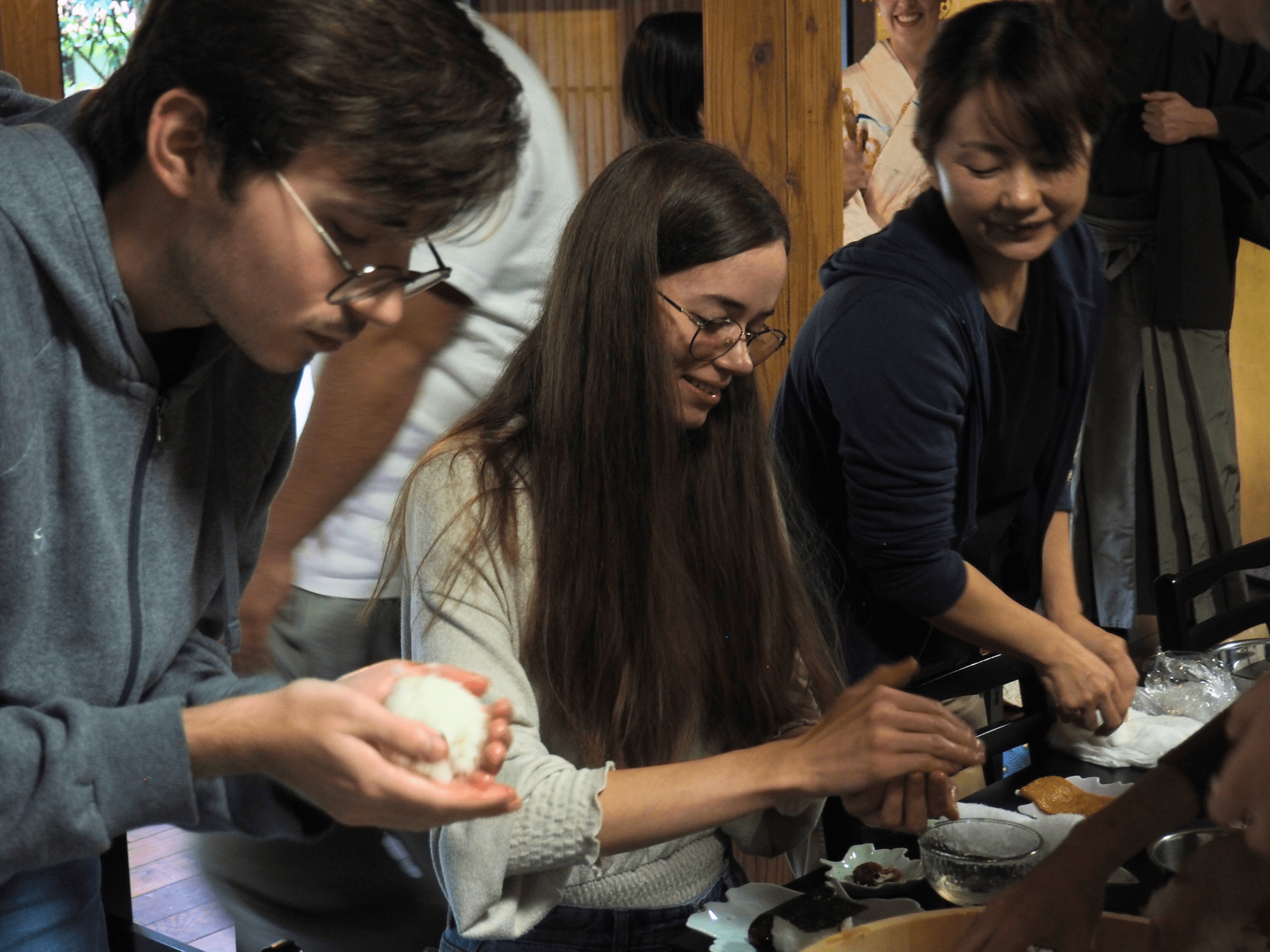
Junko-san demonstrated each step, from preparing the rice to shaping the onigiri and arranging them in the bento box. This hands-on experience allowed us to create our own bento, which we would later enjoy as a picnic lunch.

The workshop was both educational and enjoyable, highlighting the careful thought and creativity that go into crafting a traditional Japanese bento.
Daizu (soybean) harvest experience at Uribo no Sato
Next, we visited Uribo no Sato (うりぼうの里), a rural farm dedicated to growing Akebono soybeans, a rare and flavorful variety local to Yamanashi.
Despite the rain, we eagerly harvested edamame (young soybeans) and learned about the cultivation of Akebono soybeans, known for their sweetness and depth of flavor.

Our previously prepared bento lunch added to the farm experience, making this a memorable and immersive activity. Also, we got the chance to try the freshly harvested edamame.
This hands-on experience highlighted the importance of preserving traditional crops, giving participants a newfound appreciation for local agriculture.
Visit to Yorozuya Jozoten (Sake brewery)
Our next stop was Yorozuya Jozoten (萬屋醸造店), a sake brewery with over 230 years of history. Established in 1790, the brewery has stayed true to its roots, using locally sourced rice and water to produce sake that complements traditional Japanese meals.
The tour began with an introduction to the brewery’s deep-rooted connection to the local community, as well as its dedication to traditional sake-making methods. Walking through the facility, we observed the large tanks where the sake is brewed and learned about the careful process of fermenting rice and water.
We ended with a sake tasting, sampling various types that reflected the flavors of Yamanashi’s rice and water. This visit offered insight into the craftsmanship and cultural pride behind each bottle of sake.
We got to try three of their products. Each of the three Sake had their unique taste, so most probably you’ll find one that suits your taste!

Hanko carving experience at Mochizuki Koga Kobo
In the late afternoon, we visited the workshop of Mochizuki-san at Mochizuki Koga Kobo (望月煌雅工房), a master hanko carver from Yamanashi’s Rokugo town (known for being the best at this craft).
Hanko, or personal seals, are an essential part of Japanese culture, used for signatures on important documents. Each participant selected a kanji character and carefully carved it into seidenseki (青田石), a type of stone used for Hanko in Japan.

Mochizuki-san demonstrated the carving technique, guiding us through each step and offering personalized advice. Under Mochizuki-san’s patient guidance, we created unique, personalized seals to take home.
Dinner at Kakurinbo
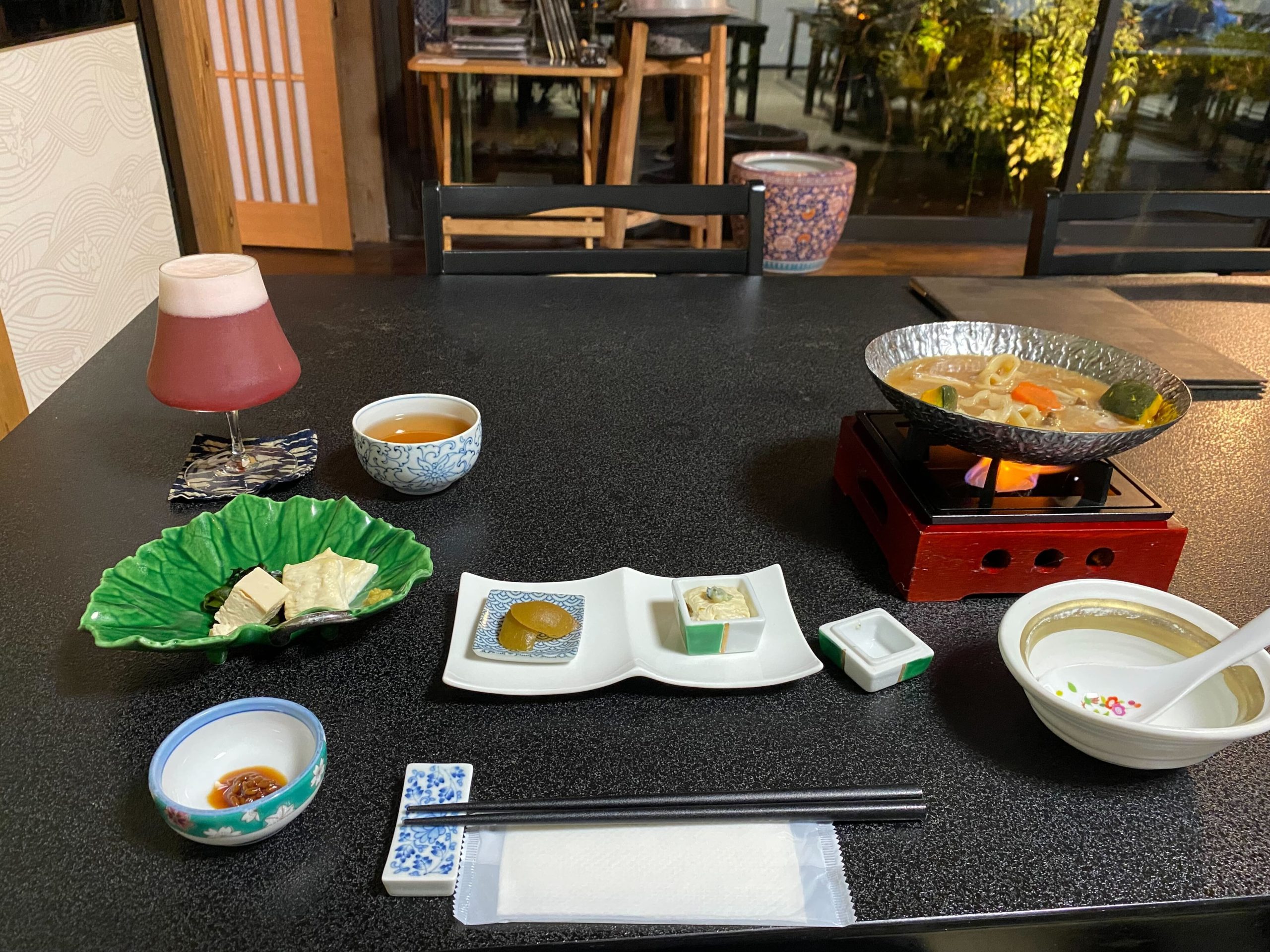
Dinner back at Kakurinbo was another feast for the senses, featuring dishes that celebrated the local flavors and culinary traditions of Yamanashi. The meal was a beautiful reflection of the temple’s commitment to using fresh, local ingredients and offering guests a taste of Buddhist cuisine.
*If you like beer, I strongly recommend you try the “Plum beer,” which incorporates surplus plums as part of a sustainable initiative.
Matsuri Demonstration

In the evening, we attended a Matsuri demonstration. Due to rain, the event was moved to Kakurinbo’s main hall, where Zeko-san led a vibrant display of traditional festival music and dance.
Dressed in traditional attire, he demonstrated various elements of Matsuri, including drumming and the spinning of a ceremonial Matoi (纏).
Mando-Gyoretsu (万灯行列) is an event held in honor of Nichiren Shonin’s passing. Although this event officially takes place from October 11 to 13, Kakurinbo offers a demonstration so that visitors can learn more about the traditions in Minobu. It is a powerful cultural experience that connects participants to the temple’s historical legacy.

This lively and spirited event offered a glimpse into the local culture and traditions of Minobu, making for a joyful conclusion to the day.
Day 3
Morning Yoga experience
On my final morning, I joined a yoga session in Kakurinbo’s main hall, led by Matsubara-san, an experienced instructor specializing in Hatha yoga.
The one-hour session focused on simple poses suitable for beginners, guiding participants through breathing exercises and meditative postures. Although Matsubara-san didn’t speak English, her gestures and calm demeanor made the class easy to follow.
The class concluded with a few minutes of silent meditation, allowing us to reflect and relax fully before breakfast.
This peaceful, introspective session helped us start the day with clarity and focus, embodying the spirit of Kakurinbo as a place for reflection and renewal.
Breakfast at Kakurinbo

Our breakfast after yoga was a traditional Japanese meal featuring freshly cooked rice, miso soup, and side dishes that celebrated the simplicity and elegance of Japanese cuisine.
Soba-making experience
After breakfast, Tanimura-san returned to lead a full soba-making workshop, guiding us through each step of the process.
From mixing the buckwheat flour with just the right amount of water to kneading, rolling, and cutting the dough, each step required focus and precision.
The experience was a blend of skill and mindfulness, as we followed Tanimura-san’s guidance to create our own noodles.
We learned to make ni-hachi soba, a variety made from 20% regular flour and 80% buckwheat.
The fresh soba we prepared was cooked on the spot, allowing us to taste the fruits of our labor.
Check out
Following the soba-making experience, I checked out of Kakurinbo. Mt. Minobu’s peaceful atmosphere and the immersive experiences at Kakurinbo made this trip deeply rewarding, offering a serene escape from city life.
I boarded the 3:10 pm highway bus to Tokyo, which arrived in Shinjuku at 6:50 pm.
For those considering alternative routes, trains from Kofu or Shin-Fuji also provide convenient access to various destinations across Japan.
My Thoughts
Temple stays in Japan provide a unique opportunity to connect with the country’s culture and spirituality. While Kyoto is known for temple lodgings, it can be crowded, making Mt. Minobu a perfect alternative for those seeking peace.
Minobu’s tranquil atmosphere and proximity to both Tokyo and Kansai make it an ideal stop for travelers seeking a quieter, more contemplative journey. The unique blend of spiritual and cultural experiences, coupled with Kakurinbo’s dedication to hospitality, created a space where I could unwind, reflect, and immerse myself in Japanese culture.
Many international visitors find themselves returning to Kakurinbo for its serene environment, attentive staff, and a wide array of experiences.
With countless activities available, from soba-making to Matsuri performances, Kakurinbo presents a blend of relaxation and learning that resonates with visitors from all backgrounds. To fully enjoy all the offerings, be sure to inquire about your desired activities when booking.
Access
Getting to Kakurinbo is simple, with several convenient transportation options available from both Tokyo and Kansai. The closest train station is JR Minobu Station, from which you can take a bus to Minobusan and walk to Kakurinbo.
From Tokyo:
- Via JR Chuo Line: Take the JR Chuo Line express from Shinjuku to Kofu (about 1 hour and 40 minutes), then transfer to the JR Minobu Line express to Minobu (1 hour).
- Via Tokaido Shinkansen: Take the Tokaido Shinkansen from Tokyo to Shin-Fuji (1 hour and 15 minutes), then transfer to the JR Minobu Line to Minobu (1 hour).
- From Kansai (Osaka/Kyoto):: Direct highway buses run from Shinjuku Bus Terminal to Minobusan, arriving near the temple area. This is a convenient option for those who prefer a hassle-free journey.
From Kansai (Osaka/Kyoto):
- Via Tokaido Shinkansen: From Shin-Osaka, take the Shinkansen to Shin-Fuji (about 2 hours and 50 minutes) and transfer to the JR Minobu Line to Minobu.
 Access Access |
From JR Minobu Station, take the Yamanashi Kotsu bus bound for "Minobusan" and get off at the final stop, "Minobusan." From there, it's about a 10 minute walk. |
|---|---|
 Official Website Official Website |
https://kakurinbo.jp/english/ |
▽Subscribe to our free news magazine!▽
For more information about Yamanashi and its surrounding area, check out the following articles!
▽Related Articles▽
▼Editor’s Picks▼
Written by
Born and raised in Costa Rica, I started living in Tokyo from college. I love traveling within Japan & around the world. Since I wasn’t born in Japan, I know the cultural impact that you can get when visiting Japan for the first time and what you might be worried about before your trip. And I’ve lived long enough to somewhat understand the nuances of the Japanese culture that make this country such an attractive place to visit. Hopefully I can provide to you both the information you’re looking for and the information you didn’t know you needed to know.








